Glamorous overwater resorts, pristine white-sand beaches, and a spectacular underwater world make the Maldives the ultimate travel destination for the discerning traveler. The sovereign archipelagic nation – positioned in the Indian Ocean southwest of India – consists of 26 breathtaking atolls boasting rich cultural traditions and natural treasures. All 1192 coral islands and sandbanks (200 inhabited islands, plus 100 islands with tourist resorts) are the visible coral tips of an oceanic volcanic mountain range whose outer edge at some points plunge to depths of over 3 km (10,000 ft). The tiny islands are encircled by magnificent beaches and incredibly beautiful lagoons, blessed with crystal clear waters and protected by reef structures. Every resort in the Maldives is built on its own private, picture-perfect palm island, with all of the world’s most exclusive hotel brands competing with each other to offer their guests unprecedented levels of mind-blowing luxury. A holiday in the Maldives can be easily combined with a stay in Sri Lanka as there are numerous direct flights – most of them operated by SriLankan Airlines – between Sri Lanka and the Maldives (with a flight time of around one hour).
Get the most out of your (luxury) trip to the Maldives with my travel guide. Find out more about:
- Best time to visit
- How to get there
- Getting around
- Travel requirements
- Inspiration, highlights, & travel tips
- Suggested itineraries
- Recommended luxury hotels (+ reviews)
BEST TIME TO VISIT
The Maldives enjoy a tropical climate, hot all year round, with a weather pattern that is mainly determined by two monsoon seasons in which the trade winds blow from opposite directions.
- The best weather in the Maldives is between January and mid-April, when the dry northeast monsoon prevails. You can expect blue skies and low humidity, although occasional, short showers can still occur (especially in the southern atolls). The dry season also coincides with the northern hemisphere’s cold winter season, which means this is high season in the Maldives, with low availability (although it never gets crowded) and often insanely expensive room rates at the resorts.
- The wet southwest monsoon runs from May to October, peaking in June. Although the temperatures remain as warm as in the dry season, rainy days and thunderstorms are far more likely. There may be days, or periods of a few days, when the sky is cloudy. However, even during this period, there are usually long periods of bright sunshine, and more affordable room rates mean this is still a good time to visit.
- The transition periods between the dry northeast and the wet southwest monsoon usually occurs sometime in late November or December and the end of April or May. These transition periods are often accompanied by a longer period of unsettled weather and overcast, rainy days.
It has to be noted that the tropical climate in the Maldives and the exact timing of the transition periods have become very much unpredictable in recent years, with the wet season becoming drier and the dry season seeing more showers. Also, there a subtle differences in the weather patterns from atoll to atoll, since the Maldives is a very large country, stretching out over 800 km (500 mi) in the equatorial area. The northern atolls – which are home to the archipelago’s most luxurious resorts – enjoy more sunshine and have lesser annual rainfall than the central atolls (where the capital Male is located) and the atolls located south of the Equator. This geographic difference is mainly due to the fact that the dry season is more pronounced in the northernmost atolls.
Some travelers visit the Maldives, not so much for the beaches and resorts, but for the world-class diving and the opportunity of swimming with manta rays and whale sharks. Diving conditions are superb throughout the year, but the areas frequented by the larger marine animals vary with the seasons. During the dry northeast monsoon season, manta ray and whale shark diving in the Maldives is best on the western side of the atolls, whereas during the Southeast Monsoon season, manta rays and whale sharks will typically be encountered near the eastern edge of the atolls.
IMHO, it is worth paying higher prices and sticking to the dry season in the Maldives (January to mid-April) as there is not much to do on a rainy day, except drink, eat, work out, or scuba dive.
HOW TO GET THERE
The majority of the Maldives’ secluded resorts on far-flung private islands are within a one hour boat or floatplane ride from the Maldives’ main airport, Male International Airport (MLE; also known as Velana International Airport), which is located in the North Male Atoll near the capital of Male. The airport is served by a wide array of international Asian and European airlines, both charters and mainstream carriers. Click here for a list of airlines that offer direct flights to Male International Airport.
Before you buy a plane ticket, consider reading my tips & tricks for buying the cheapest plane ticket.
GETTING AROUND
Transfers from Male airport to the hotels are taken care of by the resorts:
- Hotels located in the North and South Male Atoll are reached by boat from the airport, with a transfer time between 15 minutes and one hour. Due to their proximity to the airport, these resort experience more boat traffic and noise levels as compared the more remotely located resorts in other atolls. Boat transfers run 24 hours a day.
- Hotels located in all other central atolls (except the Laamu Atoll) as well as the northernmost atolls can be reached by seaplane from the airport, with a flight time between 20 minutes and one hour. Admiring the picture-perfect archipelago from a bird’s eye perspective is one of the ultimate experiences that the destination has to offer. However, keep in mind that seaplanes operate during daylight hours only, so you may have to stay overnight near the airport when you arrive at the Maldives after 4 pm. In addition, getting to a resort in a remote atoll by seaplane does take more time as compared to reaching one of the hotels closer to the airport, because of additional waiting time at the airport. On a positive note, most five-star hotels offer a private lounge near the airport to ease the waiting process which seldom exceeds two hours.
- Hotels located in the Laamu Atoll and all southern atolls are reached by a domestic flight, operated by a turboprop plane, followed by a speedboat transfer. Getting to these resort requires an often lengthy and tiring trip, something you may not be looking forward to after your long-haul flight arrives in the Maldives. Besides the 30 to 60 minute domestic flight, you also have to take into account waiting time – varying from one to maximum five hours – at Male airport, both at the start and the end of your journey. All in all, it means that getting to these resorts may take a large chunk of your holiday time on the day of your arrival and departure, making the southern atolls not ideal for a short trip. I suggest you stay at least 5 nights here to make the most of the long journey getting there. The good news is that once there, you will completely relax in otherworldly tropical scenery.
TRAVEL REQUIREMENTS
Requirements for entry into the Maldives differ from country to country, and are subject to change. Prior to departure, always check with your government and your nearest Maldivian embassy or consulate what documents you need for travel to the Maldives.
- You need a valid passport. The passport should be valid for a minimum period of 6 months from the date of entry into the Maldives.
- The Maldives have a remarkably easy visa policy: everybody gets a free 30-day visa on arrival, provided that you have a valid travel document, a ticket out and proof of sufficient funds, defined as a confirmed reservation in a hotel.
Make sure you read my 10 tips to plan a worry-free trip.
INSPIRATION, HIGHLIGHTS, & TRAVEL TIPS
There are several good reasons why you should put the Maldives on your bucket list:
- Magnificent white-sand beaches, that rank among the best beaches in the world.
- Incredible marine wildlife viewing opportunities (the Maldives is the world’s best snorkeling and diving destination).
- Ultra-luxury overwater resorts, unmatched in the world.
The following articles may also inspire you and help you plan your holiday to the Maldives:
- Top 10 best things to see & do in the Maldives
- Top 10 most insanely beautiful resorts in the Maldives
- Top 10 best resorts in the Maldives for snorkeling
- Top 10 best resorts in the Maldives close to Male airport
- Top 10 most fabulous overwater villas in the Maldives
- Top 10 best resorts in the Maldives for couples
- Top 10 best resorts in the Maldives for families
- Maldives vs Seychelles vs Mauritius: which one is best?
- Get complimentary VIP perks at the Maldives’ most exclusive resorts: the Soneva properties
- Tips & tricks for getting the best deal at a luxury hotel
- Tips & tricks for buying the cheapest plane ticket
SUGGESTED ITINERARIES
Most people who travel to the Maldives stay at one resort for one week. I don’t recommend to travel around too much within the Maldives, since getting from one resort to another is an expensive and often time-consuming affair (since you mostly have to backtrack via Male airport).
However, if the prospect of staying an entire week at one resort on a little island sounds too much for you, there are a few resorts that can be easily combined in one and the same itinerary, because they are either located in the same atoll or connected via a direct and private (and often pricey) speedboat transfer. A few examples:
- Noonu Atoll: Soneva Jani, Cheval Blanc Randheli, and Velaa Private Island
- Baa Atoll (a UNESCOBiosphere Reserve): Soneva Fushi, Four Seasons Landaa Giravaaru, and Anantara Kihavah
- North Male Atoll: One&Only Reethi Rah, Patina Maldives, The Ritz-Carlton Fari Islands, Four Seasons Kuda Huraa, and Gili Lankanfushi
- South Male Atoll: Taj Exotica Resort & Spa, Waldorf Astoria Maldives Ithaafushi, Naladhu and COMO Cocoa Island
- Huvadhu Atoll: Park Hyatt Hadahaa and Raffles Maldives Meradhoo Resort
In addition, a select group of ultra-luxe hotel companies operates more than one resort in the Maldives, offering an enhanced and more convenient transfer experience between their properties. A few examples:
- Soneva: Soneva Fushi and Soneva Jani (60 min speedboat transfer between both resorts)
- Four Seasons: Four Seasons Landaa Giravaaru and Four Seasons Kuda Huraa (40 min watertaxi transfer)
- COMO hotels & resorts: COMO Cocoa Island and COMO Maalifushi (45 min watertaxi transfer)
RECOMMENDED LUXURY HOTELS (+ REVIEWS)
I recommend to visit my top 10 travel lists if you are eager to know how I rank the Maldives’ top hotels, based on my own experience:
- Top 10 most insanely beautiful resorts in the Maldives
- Top 10 best resorts in the Maldives for snorkeling
- Top 10 best resorts in the Maldives close to Male airport
- Top 10 most fabulous overwater villas in the Maldives
- Top 10 best resorts in the Maldives for couples
- Top 10 best resorts in the Maldives for families
Below, you find my reviews of hotels in the Maldives (with pros, cons, and tips to save money per hotel).
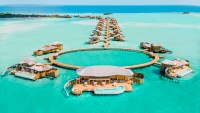 Review: Soneva Jani Chapter Two (Maldives)
Review: Soneva Jani Chapter Two (Maldives)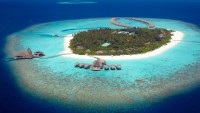 Review: Anantara Kihavah Maldives Villas
Review: Anantara Kihavah Maldives Villas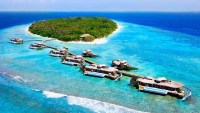 Review: Soneva Fushi Maldives
Review: Soneva Fushi Maldives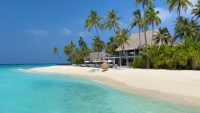 Review: Velaa Private Island (Maldives)
Review: Velaa Private Island (Maldives)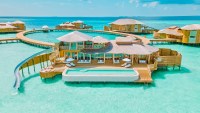 Review: Soneva Jani, the Maldives’ most famous resort
Review: Soneva Jani, the Maldives’ most famous resort Review: Soneva In Aqua, the Maldives’ most exclusive yacht
Review: Soneva In Aqua, the Maldives’ most exclusive yacht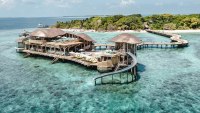 Review: Soneva Fushi (Maldives), my best holiday ever!
Review: Soneva Fushi (Maldives), my best holiday ever!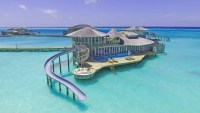 Review of Soneva Jani, the Maldives’ most fabulous resort
Review of Soneva Jani, the Maldives’ most fabulous resort Hotel review: Park Hyatt Maldives Hadahaa
Hotel review: Park Hyatt Maldives Hadahaa Review of the largest overwater villa in the Maldives
Review of the largest overwater villa in the Maldives Review: The St Regis Maldives Vommuli Resort
Review: The St Regis Maldives Vommuli Resort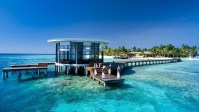 Review: Dhevanafushi Maldives Luxury resort
Review: Dhevanafushi Maldives Luxury resort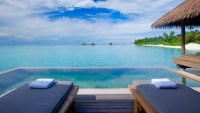 Hotel review: Maalifushi by COMO (Maldives)
Hotel review: Maalifushi by COMO (Maldives)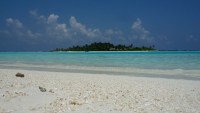 Hotel review: Naladhu, South Male Atoll (Maldives)
Hotel review: Naladhu, South Male Atoll (Maldives)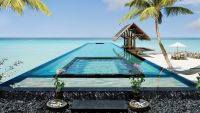 Hotel review: One&Only Reethi Rah (Maldives)
Hotel review: One&Only Reethi Rah (Maldives)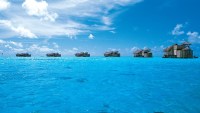 Hotel review: Gili Lankanfushi (Maldives)
Hotel review: Gili Lankanfushi (Maldives)
*** Follow me on Instagram, YouTube, Twitter or Facebook for a daily moment of travel inspiration ***


These are the island of the paradise.
Yes! Finally something about cialis interactions.
Hello, I am from New Hampshire and would be flying out of MHT or Boston Logan to start my journey (alone)..which comes to my next question. I would like to stay in a Villa on the island in the Maldives, the smallest one available. What would I be looking at for cost to fly round trip with all transfers, food, all inclusive, by myself, for one week? Thank you for your time and thoughts in advance.
Nice blog author. Thank you. Keep it up.